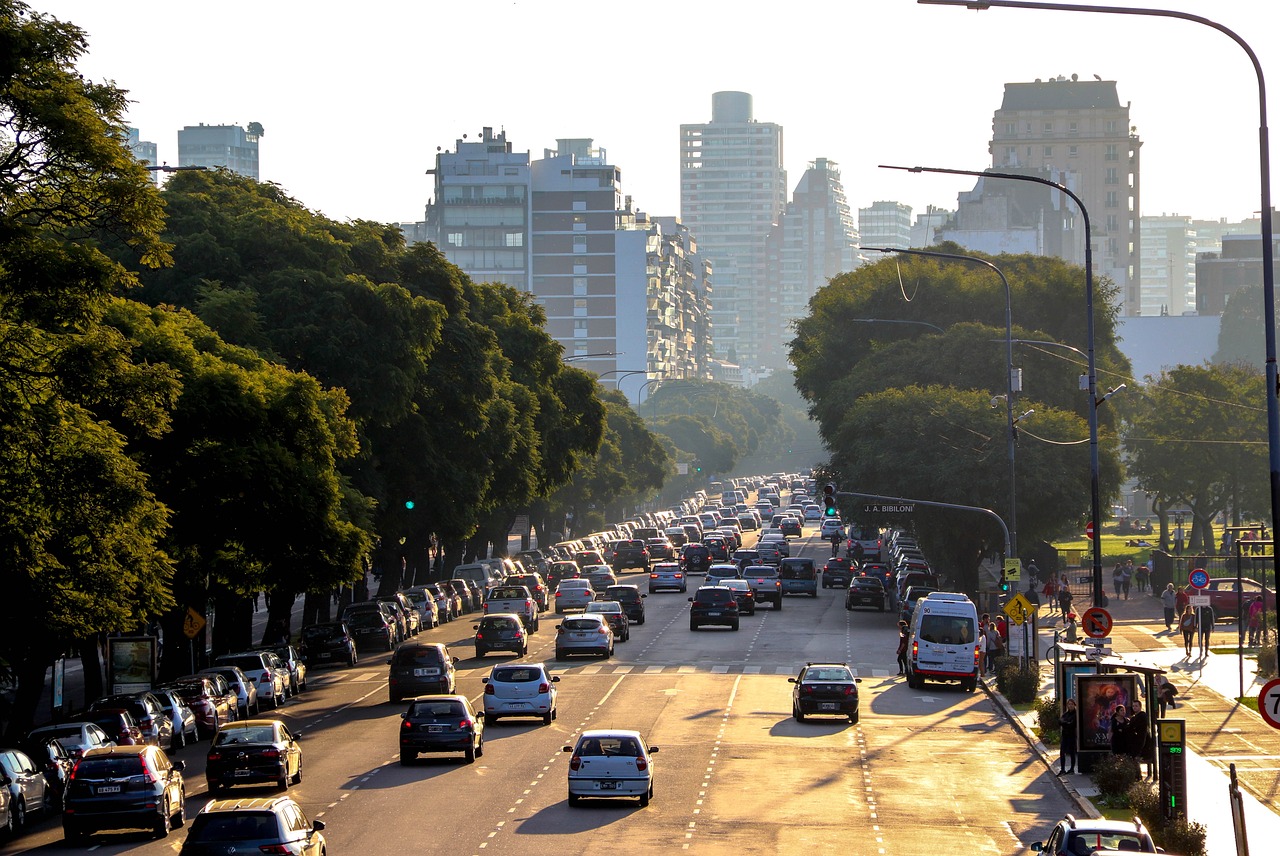In this post we’ll look at some Spanish vocabulary related to cars and driving.
Mi carro: My car
Let’s start with some basic vocabulary: un carro, un coche, un auto (car), conducir, manejar (to drive), la gasolina (gas/petrol), poner gasolina, echar gasolina (to get gas), llenar el tanque de gasolina (to fill the gas tank), el cinturón de seguridad (seatbelt), el garaje, la cochera (garage), encender el carro/coche/auto, prender el carro/coche/auto (to start the car), estacionar el carro/coche/auto, aparcar el carro/coche/auto (to park the car), un estacionamiento, un aparcadero (parking lot), un puesto de estacionamiento (parking space), apagar el motor, apagar el carro/coche/auto (to turn off the engine).
NOTE: The word you’ll use for car will depend on which Spanish-speaking country you’re in. In Spain and parts of Mexico, it’s el coche. El carro is also used in Mexico, as it is in Colombia and Venezuela. In other countries, use el auto.
- ¿Tienes/Tiene un carro?
Do you have a car? - Me compré un carro nuevo.
I bought a new car. - Todas las semanas conduzco/manejo mucho.
I drive a lot every week. - Ponte/Póngase el cinturón de seguridad.
Put on your seatbelt. - Tengo que poner/echar gasolina.
I need to get gas. - Llene el tanque, por favor.
Fill the tank, please. - ¿Estaciona(s) en un garaje o en la calle?
Do you park in a garage or on the street? - No puedo encontrar un puesto de estacionamiento.
I can’t find a parking space.
Abre la puerta del carro/coche/auto. Unlock the car door!
Now let’s look at some vocabulary for parts of a car. la puerta del carro/coche/auto (car door), el parabrisas (windshield), el limpiaparabrisas (windshield wipers), subir/bajar la ventana/el vidrio (to put up/down the window), el maletero, la cajuela (trunk/boot), el capó (hood/ bonnet), el volante (steering wheel), el asiento delantero (front seat), el asiento trasero (back seat), los faros (headlights), los frenos (brakes), el motor (engine), las intermitentes, la luz de cruce (blinker, turn signal), las luces de freno (brake lights), cambiar el aceite (to change the oil), un mecánico (mechanic).
- Las maletas están en el maletero.
The suitcases are in the trunk. - Los niños están sentados en el asiento trasero.
The kids are sitting in the back seat. - ¡Hace frío! Sube/Suba la ventana y prende la calefacción.
It’s cold! Put up the windows and turn on the heat. - ¡Hace calor! Abre/Abra la ventana o prende el aire acondicionado.
It’s hot! Open the windows or put the air conditioning on. - Está lloviendo. Tengo que poner el limpiaparabrisas.
It’s raining. I need to put on the windshield wipers. - Está oscuro. Tengo que poner los faros.
It’s dark. I need to put on the headlights. - El motor está debajo del capó.
The engine is under the hood. - Mi carro necesita frenos nuevos.
My car needs new brakes. - Pon la luz de cruce y gira en la próxima calle.
Put on your blinker (turn signal) and turn at the next street. - Tengo que cambiarle el aceite a mi carro.
I need to change the oil in my car. - Algo anda mal con/Algo le pasa a mi carro. Necesito un mecánico.
Something is wrong with my car. I need a mechanic.
Gira a la derecha en el semáforo. Turn right at the traffic light.
Now let’s see some vocabulary that describes what we do when we drive. conducir/manejar recto (to drive straight), girar a la izquierda/a la derecha (to turn left/right), dar marcha atrás, retroceder (to reverse), cambiar de marcha / de velocidades (to change gears), un semáforo (traffic light), una señal de alto (stop sign), el límite de velocidad (speed limit), tocar/sonar la bocina (to honk the horn).
- Estás conduciendo muy rápido. Baja la velocidad.
Está conduciendo muy rápido. Baje la velocidad.
You’re driving too fast. Slow down! - Estás conduciendo muy lento. ¡Acelera!
Está conduciendo muy lento. ¡Acelere!
You’re driving too slowly. Speed up! - ¿Cuál es el límite de velocidad?
What is the speed limit? - Gira/Gire a la izquierda en el próximo semáforo.
Turn left at the next traffic light. - ¡Hay una señal de alto! ¡Detente!
¡Hay una señal de alto! ¡Deténgase!
There’s a stop sign! Stop! - ¿Por qué estará tocando la bocina?
Why is he honking his horn? - Ella dio marcha atrás para salir del puesto de estacionamiento y se marchó.
She reversed out of the parking spot and drove away.
En el camino: On the road
Now let’s look at some things you’re likely to see when you’re on the road. una calle (street), una autopista (highway), una salida de autopista (highway exit), entrar en la autopista (to get on the highway), una taquilla/una cabina de peaje (toll booth), un puente (bridge), una señal de tráfico/de tránsito (road sign), una glorieta, una rotonda (traffic circle/roundabout), un camión (truck), adelantar un carro/un vehículo (to pass a car), un carril, un canal (lane), una gasolinera, una estación de gasolina (gas station), un embotellamiento, un atasco de vehículos, una congestión de vehículos (traffic jam), tomar una hora/dos horas conducir hasta X, tardar una hora/dos horas en carro/coche hasta X (to take one hour/two hours to drive to X.)
- ¿Cómo llego a la autopista?
How do I get to the highway? - Sal/Salga de la autopista en la próxima salida.
Get off the highway at the next exit. - Hay una cabina de peaje después del puente.
There’s a toll booth after the bridge. - ¿Qué dice en esa señal?
What does it say on that sign? - ¿Dónde está la gasolinera/ la estación de servicio más cercana?
Where is the nearest gas station? - Ese carro va muy lento. Vamos a adelantarlo.
This car is driving very slowly. Let’s pass it. - No te cambies de carril todavía, hay un camión detrás de ti.
No se cambie de carril todavía, hay un camión detrás de usted.
Don’t change lanes yet, there’s a truck behind you. - A esta hora del día el tráfico es muy malo.
A esta hora del día hay mucho tráfico.
Traffic is really bad this time of day. - Estamos atascados/as en un embotellamiento.
Estamos atascados/as en el tráfico.
We’re stuck in a traffic jam. - ¿Cuánto tarda conducir hasta el aeropuerto?
How long does it take to drive to the airport?
Tengo un pinchazo. I have a flat tire.
Sometimes things don’t always go perfectly well when we drive. hacer un giro equivocado, girar donde no era (to make a wrong turn), perderse, extraviarse (to be lost), un pinchazo, un neumático pinchado, un neumático desinflado (a flat tire), quedarse sin gasolina (to be out of gas), tener un accidente (to have an accident), hacer un frenazo, dar un frenazo (to slam on the brakes), dar un volantazo (to swerve), deslizarse (to slide), resbalarse, patinar (to skid), una batería descargada/muerta (a dead battery), chocar con un árbol/otro carro (to hit a tree/another car), recibir una multa, ser multado/multada (to get a ticket).
- Hice un giro equivocado. Nos perdimos.
Giré donde no era. Nos perdimos.
I made a wrong turn. We’re lost. - Tenemos un pinchazo.
Tenemos un neumático desinflado.
We have a flat tire. - Tuvimos un pequeño accidente / un accidente menor.
We had a minor accident. - El conductor/ La conductora delante de mí dio un frenazo.
The driver ahead of me slammed on his/her brakes. - Un perro entró corriendo en la carretera y tuve que dar un volantazo para esquivarlo.
A dog ran into the road, and I swerved to avoid it. - Los carreteras están heladas, por eso el carro se está deslizando.
The roads are icy, so the car is sliding. - Nos deslizamos hasta detenernos.
Patinamos hasta que nos detuvimos.
We skidded to a stop. - El carro no enciende. La batería está muerta/descargada.
The car won’t start. The battery is dead. - Choqué con un árbol/otro carro.
I hit a tree/another car. - Estaba conduciendo a exceso de velocidad y me multaron / me pusieron una multa.
I was speeding and got a ticket.
¡Taxi! Taxi!
Here are some vocabulary items and expressions that you can use for public transportation. un taxi (taxi), un bus, un autobús (bus), una tarifa (fare), una parada de taxi (taxi stand), una parada de autobús (bus stop), subirse en el bus (to get on the bus), bajarse del bus (to get off the bus).
NOTE: You’ll come across a few different words for bus in Spanish. El autobús (or el bus for short) is fairly common. But you’ll also hear el colectivo or el ómnibus in parts of South America. In the Caribbean you’ll hear la guagua.
- ¿Dónde puedo conseguir un taxi?
Where can I get a taxi? - Quisiera ir a la estación de trenes, por favor.
I would like to go to the train station, please. - Por favor, lléveme a esta dirección.
Please take me to this address. - ¿Cuánto es la tarifa?
How much is the fare? - Por favor, detente aquí.
Por favor, deténgase aquí.
Please stop here. - ¿Hay algún bus del aeropuerto al centro de la ciudad?
Is there a bus from the airport to the city center? - Nos bajamos en la próxima parada.
We get off at the next stop.
¿Dónde puedo alquilar un carro? Where can I rent a car?
Let’s close with some vocabulary and expressions that you can use when renting a car. alquilar un carro (to rent a car), dos puertas, cuatro puertas (two-door, four-door), la tracción en las cuatro ruedas (four-wheel drive), la transmisión automática (automatic transmission), la transmisión manual (manual transmission), un seguro (insurance), el permiso/la licensia de conducir (driver’s license), recoger/buscar el carro (to pick up the car), devolver el carro (to return the car), el kilometraje/millaje límite (mileage/kilometrage limit).
- Nos gustaría alquilar un carro.
We would like to rent a car. - Nos gustaría alquilar un carro de dos/cuatro puertas, por favor.
We would like a two-door/four-door car please. - Necesitamos un vehículo con tracción en las cuatro ruedas.
We need a four-wheel drive vehicle. - ¿Prefiere(s) transmisión automática o manual?
Do you prefer automatic or manual transmission? - Aquí está mi permiso de conducir.
Here is my driver’s license. - ¿Cuánto seguro está incluido?
How much insurance is included? - ¿Qué incluye el seguro?
What’s included in the insurance? - ¿Cuál es el límite de kilometraje/millaje diario?
What is the daily mileage/kilometrage limit? - ¿Puedo recoger/devolver el carro en el aeropuerto?
Can I pick up/return the car at the airport?
Learn Spanish with the Language Garage!
Interested in more Spanish? Check out our other posts on Spanish language, culture, and more. If you’re looking for convenient and affordable live Spanish lessons with a real teacher, visit The Language Garage. Our lessons are affordable and fun, and they’re given online in a virtual classroom, so it doesn’t matter where you live or work – we can come to you. We have flexible options, with a free trial so that you can decide if there’s a fit. Check us out!





